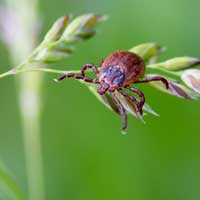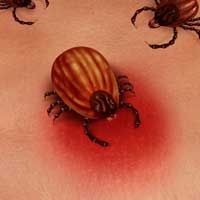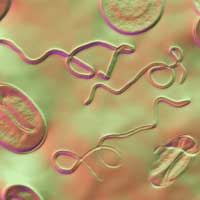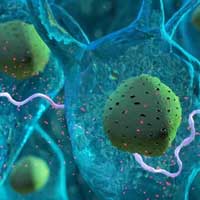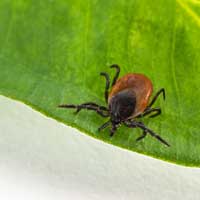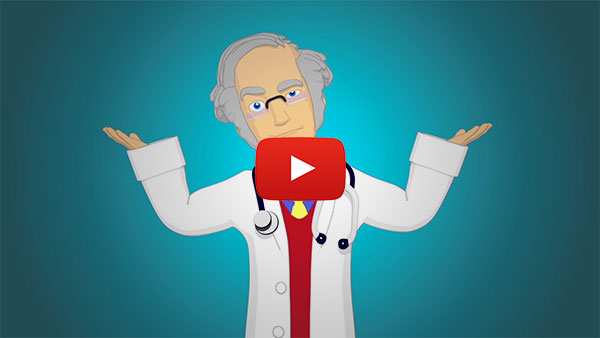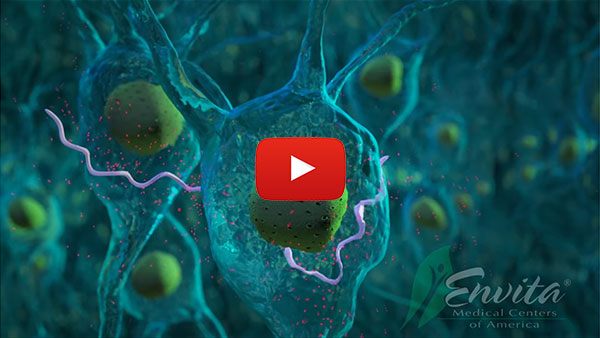Alzheimer's Linked To Lyme Disease, Keeping Your Memory Strong

A fate worse than death. That's how many see Alzheimer's and dementia, terrifying diseases that slowly eat away at cognitive function, crippling memory, perception, motor function and language ability until very little remains of the mind. But some new clinical and functional medicine findings may help patients improve their quality of life, attacking Alzheimer's and dementia at the possible root cause.
What many integrative physicians are now seeing and have been documenting for years is a strong correlation between chronic infection, heavy metal toxicity and spinal structural problems, while pharmaceutical companies instead race to prescribe medication that focuses on nerve cells, neurons and neurotransmitters.
Of course, the goal is to improve neurons and overall nerve function, however it's essential to treat why the nerve function is impaired in the first place. It's more important to look at what caused the dysfunction then simply giving medication that falls extremely short of restoring the patient's overall quality of life.
Despite affecting more than 25 million people worldwide, mainstream medicine does not have a clear understanding of Alzheimer's disease. Current treatments are only able to alleviate symptoms, unable to stop or reverse the progression of the disease. However, exciting new data points to debilitating infections such as Lyme disease and babesiosis as more of a factor than previously thought.
First, let's take a look at current treatments and medications
As you may know, brain cells communicate through synapses, using chemicals called neurotransmitters. These chemicals carry important information from cell to cell, but in an Alzheimer's patient, this process is severely obstructed and eventually, the synapses are destroyed. The key question is why?
The FDA has approved five main drugs for treating Alzheimer's via two different mechanisms. The first drugs, Cholinesterase inhibitors, do their job by breaking down a key neurotransmitter. Donepezil, galantamine, rivastigmine and tacrine are some of the well-known cholinesterase inhibitors.
Then there is Memantine, an NMDA (N-methyl-D-aspartate) receptor antagonist, that regulates glutamate activity, a chemical transmitter associated with learning and memory. Cells damaged by AD and other neurological disorders release large amounts of glutamate, allowing excess calcium to enter cell membranes. Given enough time, this chronic overexposure to calcium will accelerate cell damage. Memantine works against this chain reaction by blocking some NMDA receptors.
On average, the five approved Alzheimer's drugs are effective for about six to 12 months for about half of the individuals who take them. To say the least, this is not very effective.
The important question is what is impacting the neurons and neurotransmitters in the brain. As you will see, infections release neurotoxins that impair neurotransmitter's abilities to bind to receptor sites. Other epigenetic risk factors such as other infections such as mycotoxins, environmental toxins, spinal structural issues and heavy metal toxins are proven to impact the function of these neurons as well. When these factors are all happening at the same time you have a perfect storm. So no matter how many piano lessons, puzzles and memory games you play if these factors are present, your risk and deterioration of neurons will likely accelerate.
Let's take a look at what researchers are finding and some of the ways treating the immune system has helped with symptoms of Alzheimer's.
What is Alzheimer's Disease?
Starting subtle at first, the most notable symptom of Alzheimer's is memory loss. Alzheimer's usually manifests in persons over the age of 65, so when it first begins to show, it can be associated with the normal factors of aging. It's only when these symptoms become noticeable that it becomes a problem.
As Alzheimer's starts to worsen, patients have more trouble with abstract thought processes, planning, concentration and semantic memory (such as remembering relationships and concepts). There is also disorientation, such as getting lost in familiar areas like your own neighborhood, difficulty performing everyday tasks like hygiene or making phone calls, struggles with language, excessive sleep, lack of motivation and unpredictable mood swings. [1]
But Alzheimer's doesn't stop there. Soon, not just short-term memory is impacted, but long-term memory, previously intact, starts to go as well. The ability to write and read fades. Urinary incontinence can also occur. Coordination is lost and falling becomes common as well as sundowning, a psychological condition associated with increased confusion, wandering and restlessness. [2]
Inevitably in the late stages of Alzheimer's, the patient is completely dependent on caretakers, being unable to perform even the most basic functions. Language becomes reduced to simple sentences, often single words before the ability to speak disappears completely. Patients may become aggressive, but it's more common for them to be withdrawn and exhausted. Muscle mass will deteriorate until the patient is completely bedridden, unable to even feed themselves.
Death doesn't wait long to catch up. Alzheimer's is a terminal illness, but death usually comes from an external factor such as pneumonia or ulcers. [3] Looking at the severe degradation of the mind, body and even the spirit, it's not an exaggeration that many people view dying as more preferable than suffering with Alzheimer's. But what makes it even more frightening is there is no commonly accepted cause or treatment, yet, new research has produced some promising results.
Common Causes of Dementia and Alzheimer's Disease
Many things may contribute to Alzheimer's, so let's look at a few of them. Most people point to genetics when they diagnose Alzheimer's, but its only linked in 1 to 5% of cases. [5] Since the turn of the 20th century, Alzheimer's saw an explosion in growth in developed countries, but not undeveloped countries, leading some researchers to believe this is a new disease phenomenon with strong ties to environmental factors.
Excess copper in the diet has been linked to neuronal toxicity and zinc deficiency can cause neuronal damage. [4] This copper has been hypothesized to come from copper pipes in drinking water. In mice, it has been shown that increased zinc diets show significant cognitive benefit.
Another significant link shows that injuries, especially in the spinal cord, leads to brain cells dying off and an increased production of glial cells. Glial cells are helpful in defending the brain from bacteria and toxins, but too many of them can cause scarring that inhibits healthy neuron growth. [6] Contrary to popular belief, the brain never really stops developing, as adult brains contain stem cells.[8] Through a process called neurogenesis, these cells are constantly building neural tissue, even in old age and can even repair itself after trauma such as a stroke. [7] Unfortunately, these glial cell scars are what seem to prevent the brain from recovering in the long term.
What this seems to indicate is that Alzheimer's disease is not a random occurrence linked to genetics. It's more likely that patients with AD are actually fighting against environmental pollutants, physical trauma and even chronic infections, which we'll look at in more detail below.
The Infection Connection
Many infections have been linked to Alzheimer's, although none of them are known to be a direct cause yet. The infection link is more focused with how certain bacteria, viruses and diseases act on certain genes. For example, it has been strongly suggested that herpes simplex virus type 1 (HSV1) may develop Alzheimer's because of the way it acts on the type 4 allele of the apolipoprotein gene, a known susceptibility factor in Alzheimer's. [9]
Another great example is syphilis. Syphilis, known as a “Great Imitator,” [11] is known to cause severe problems with the brain, including dementia, if untreated. Sometimes this takes years to develop, but if left untreated, syphilis can affect the nervous system by becoming neurosyphilis. In rare cases, neurosyphilis has been noted to mimic Alzheimer's. [10] A 2011 report in the Journal of Neuroinflammation stated: “It is established that chronic spirochetal infection can cause slowly progressive dementia, brain atrophy and amyloid deposition in late neurosyphilis.” [12]
Lyme disease (Borrelia burgdorferi) is related to syphilis because both infections are caused by a bacteria type known as a spirochete. These microscopic corkscrew-shaped bacteria are very good at burrowing into nervous tissue and hide from detection there, which is why it can be so difficult to test for.
Because Lyme and syphilis are so similar, this should hardly seem surprising, but what is surprising is linking these spirochete infections to people with Alzheimer's. In one study, Borrelia burgdorferi was detected in the brain in 25.3% of AD cases analyzed and was 13 times more frequent in AD compared to controls. [12]
Because symptoms of Lyme disease are also known as a “Great Imitator,” [11] it is often associated with conditions as varied as fibromyalgia, chronic fatigue syndrome, rheumatoid arthritis and more. Many patients with Lyme will describe the “Lyme fog” they have. All of these symptoms seem to overlap with AD.
Lyme disease brings with it many coinfections, at least four other pathogens, one of which is Babesia, which causes babesiosis, a malarial-like infection. [13] When you begin to see all these infections coming together and being so easily able to hide in your nervous system, it begins to become clear. The body is fighting something and it can't win. Alzheimer's patients have hyperactive immune systems because of this.
This is what makes fighting infections so crucial. When it comes to making Alzheimer's disease more explainable, something with treatment that actually might make progress, it is crucial to focus on infections, environmental factors such as chemical toxins and heavy metal poisoning.
We must be clear that there is no one treatment currently identified to cure or reverse Alzheimer's disease or dementia, however, if patients have several of these factors, then treating them may help improve their quality of life and cognitive function as a whole. It's important to understand the integrative approach aims to find the individual factors that are contributing to a person's poor health, but doesn't work as a cure-all. Nevertheless, we feel that these above factors need to be tested for and treated as critical starting point for optimal health no matter what the treatment is.
If you have any questions about our treatment, please feel free to contact us.











